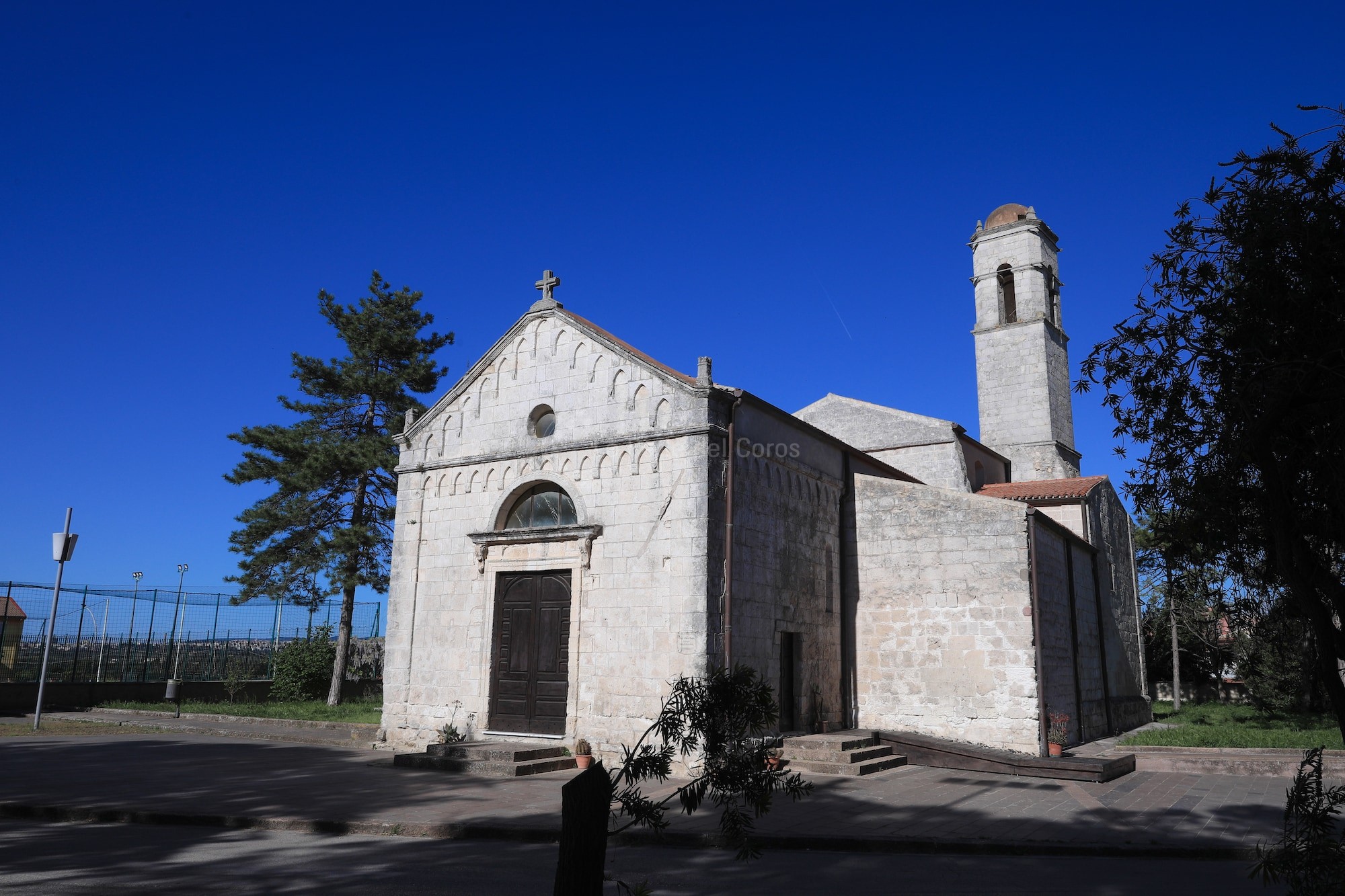
Usini
Church of the Holy Cross S’Ena Frisca
The Church of the Holy Cross is located in the village of Usini, in the area where the first housing unit probably developed in the Neolithic Age. The date of construction is unknown, but the restoration experts who renovated the church say the date 1150 was incised that on an ashlar of the external wall of the first building. From the reports of Andrea Sussarellu, the architect who directed the restoration work and planned the project, the building was constructed in four stages, beginning in the 12th century. The building was a small rectangular chapel, used by the Cistercian monks of the Abby of Paulis who had built it as a rest stop along their way to Sassari. Almost certainly the area belonged to the Cistercian nuns of Saint Peter in Silki, as indicated by documentation of the construction period in the Condaghe of Saint Peter (tn* a condaghe is a register of the Church’s belongings in Medieval Sardinia). According to architect Sussarello’s report, the church had existed since the 16th century, but in part of the presbytery and the apse, there are elements typical of 14th century construction. The building, made from limestone ashlars, has an apse, a presbytery, a sacristy and a central nave with lateral chapels. The current aspect of the building is the result of a series of transformations and integrations, resulting in the mingling of various architectural and decorative styles, ranging from Romanesque to Catalan-Gothic. The double pitched façade is modest with simple geometric shapes. The square at the base and the triangle of the gable are united by a frame. The main entrance door has moulded doorjambs and in the upper part it is crowned by an architrave over a shelf of Classical style, surmounted by a round arch. The surface is defined by two corner pilasters divided by a base in ashlars. To decorate the building, there is a hanging arcade of blind lancet arches, with moulded and decorated corbels, positioned under the double pitched roof frame of the gable. The bell tower, extending from a side of the presbytery, towers over the building and has a square body, divided into three parts by stringcourses. The arches of the bells are round: the bell space is covered by a hemispheric dome and adorned with a central frame. The furnishings inside the church are of particular interest, such as the Baroque polychrome main altar made of wood and predominantly coloured blue and gold that comes from the Oratory of the Rosary; and the altar of the Crucified, from the 18th century, from the old oratory of the Holy Cross. Also worthy of mention is the splendid wooden pulpit from the church of the Isabelline nuns of Sassari, that arrived in Usini after the suppression of the order in 1855. The walls of the church are covered with many paintings, among which are fourteen oil paintings on canvass, depicting the Via Crucis and ascribable to an unknown painter from Piedmont from the 19th century.
Source: http://www.sistemacorosfigulinas.it/index.php/territorio-e-cultura/usini/97-comune-di-usini-localita-paesaggistiche
“Usini, Un paese Una parrocchia Una pievania dal XIII al XX secolo” (Usini, a Town, a Parish, a Parsonage, from the 13th to the 20th century”, in Italian), by Antonio Bazzoni






